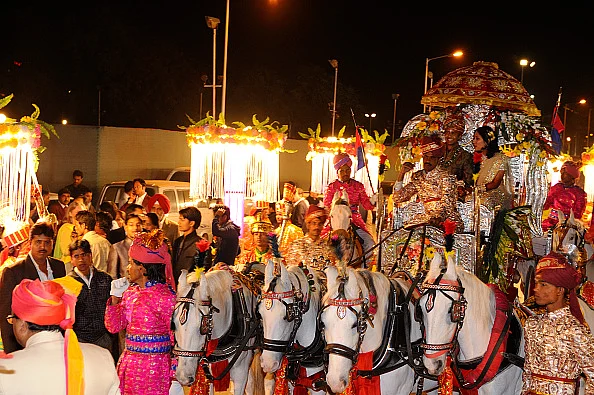Long, long ago, weddings used to be simple affairs. Friends and relatives came, ate and drank, blessed and gossiped. Tribal weddings had many quirky rituals, like the groom escaping from the bride's house among the Garo tribe in Meghalaya. In south Indian Brahman weddings, girls and boys trained in Carnatic music or classical dance and showcased their talent. In Bihar, nobody had heard of mehendi or sangeet.
All this now seems from a time when dinosaurs roamed. Exotic destinations, diamond-studded trousseaus, international songsters on stage, Bollywood stars as ushers, private jets ferrying guests, Punjabi pop are the aspirational standards now even among the less filthy rich.
And yet, some kilometers away from a recent big, fat, over-the-top pre-wedding in Jamnagar, in Chadasana in Gujarat, a Dalit groom was dragged off his horse, attacked and humiliated by upper caste men as he was heading towards the bride's house. The big, fat Indian wedding is not for all.
In the run-up to Lok Sabha elections, this Outlook edition also takes a deep dive into the four new "castes" as defined by PM Modi—women, farmers, youth, and the poor.






















